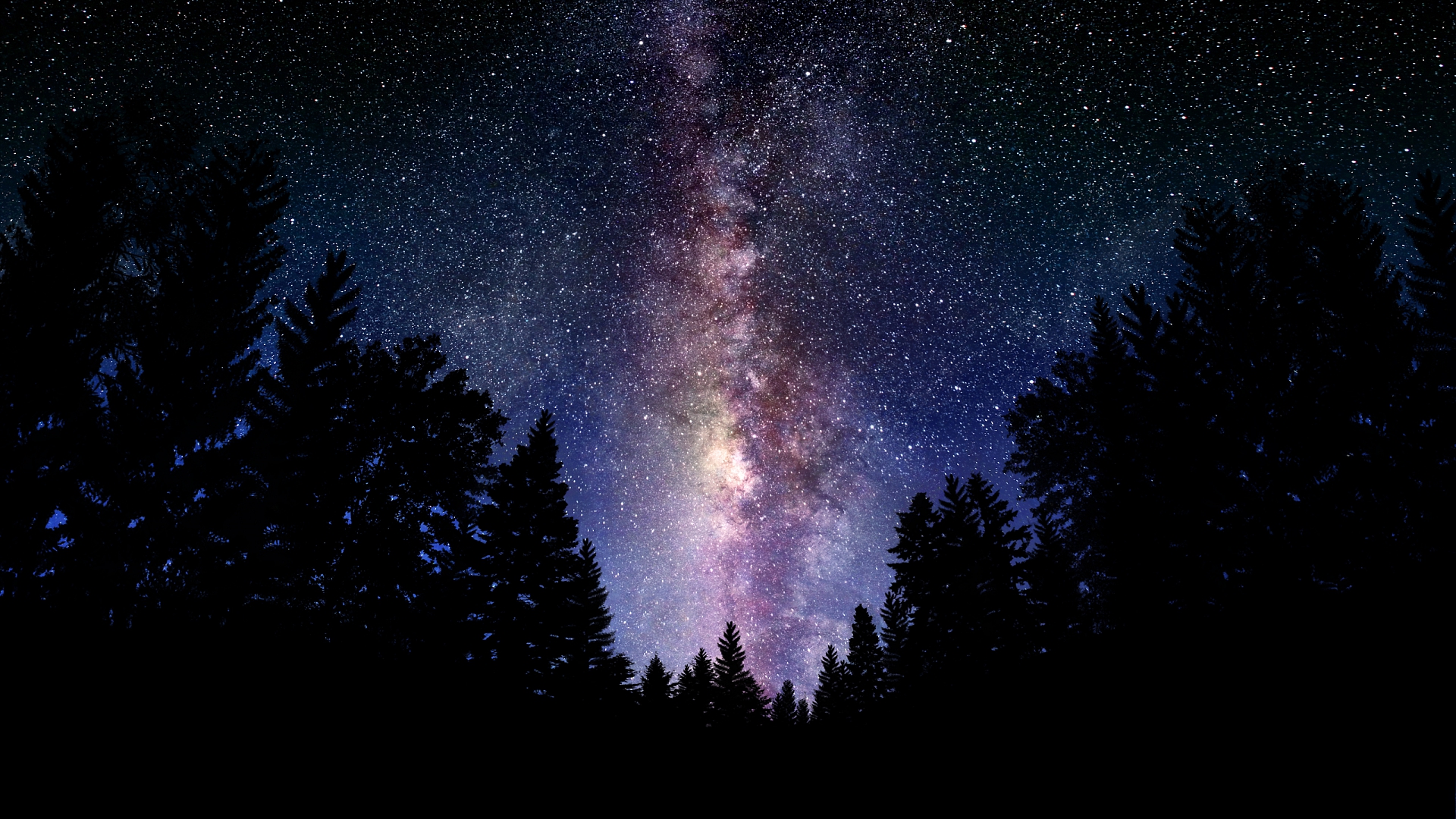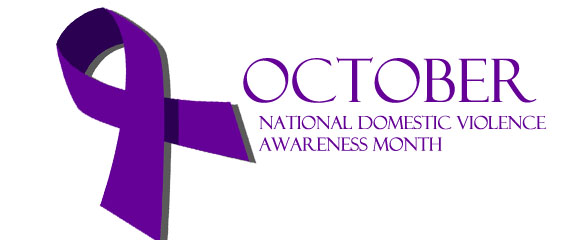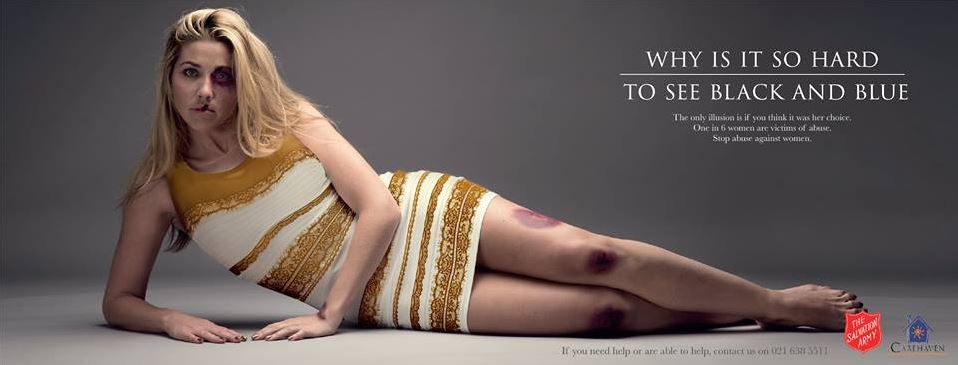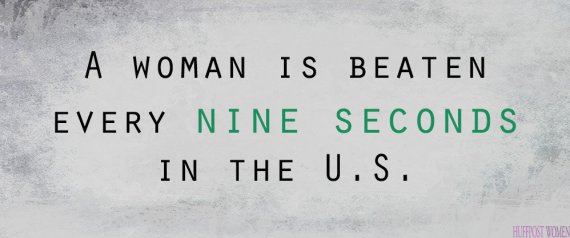Capitalism and Witches
H. Bradford
10/14/17
The following was written for the Feminist Justice League as part of a monthly “Feminist Frolic.” These events are a way for local feminist activists to get together and educate each other on a feminist topic while enjoying the outdoors. This was written for an event wherein activists gathered to learn more about the history of witches followed by a fall themed night hike to a cemetery.
Since the advent of the feminist movement, there has been increased interest in the history of witches. In contrast to earlier scholars on the topic who often approached this history with gender blindness, feminist scholars have sought to connect the history of witches to larger issues of gender based oppression by framing the persecution of witches as organized violence targeted specifically against women. Thus, over the past few decades there have been numerous books and articles which have explored different facets of witches and their place in women’s history. It would take months if not years to do justice to this vast and interesting topic. Regrettably, this paper only scratches the surface of this history by highlighting some of the research on the topic. With that said, although there are debates on the actual numbers of people who were killed or tried for witchcraft, there were at least 110,000 people tried in the Americas and Europe between 1450 and 1750. Historians have many different interpretations of the causes of these witch hunts, ranging from hallucinations, religious fundamentalism, to economic instability (Thompson, 2003). However, one of the most intriguing arguments regarding the cause of the persecution of witches is the development of capitalism itself, which coincided with the dates wherein witch hunts were at their height. Thus, while there are many ways to approach the topic of witches, the focus of this piece is to understand the economic roots of the persecution of witches.
Female Power in Early Europe:
To understand witches (in European context), it is important to go deep into European history. While the world today is steeped in male power, it was not necessarily always so. Feminist anthropologists have argued that women once enjoyed more power and status than they do today, though there is caution in going as far as to say Europe was once purely matriarchal. One of the more classic texts to make this argument was Raine Esler’s (1987) book, The Chalice and the Blade. I read Esler’s book over a decade ago, but it was eye-opening and one of those wonderfully memorable works that opens one’s mind to the possibilities of history. Esler (1987) posited that for 30,000 years the women of Europe were important and equal members of society and that in general, European societies were more egalitarian. One example of the evidence of the importance of women was the discovery of Venus figurines. Venus figurines are artifacts made of bone, clay, ceramic, stone, ivory, etc. that have been found all over Europe and date from 11,000-35,000 years ago. Esler (1987) argued that these figures may have represented a fertility cult or fertility goddess, as their sexual characteristics were exaggerated and some of the figurines appear to be pregnant. She also argued that Neolithic settlements in Turkey, such as Catal Huyuk and Hacilar do not have striking differences in the sizes of houses or the size of gifts used with burials. In all, Neolithic art was centered around nature and fertility and burials were largely equal. The book argues that European societies based upon sharing relationships, with an aversion to warfare, and gender equality were ended about 7000 years ago when nomadic Indo-Europeans spread across Europe, bringing warfare, male gods, and patriarchal social relationships. European history since then has been the gradual destruction of the remnants of its more female centered early history. Thus, early female goddesses from more matrifocal societies were turned into villainous, evil characters in European folklore or religions until they were wiped out entirely. A particular example used by Esler (1987) was the Minoan snake goddess. In Minoan culture, during the Bronze age on the island of Crete, women played an important role in society as administrators, priestesses, traders, and other occupations. The Minoans also worshiped more female goddesses than male gods, including a Snake Goddess which appears in various figurines on Crete dating back as far as 5700 BC. The Snake Goddess is believed to represent fertility and the earth and other goddesses associated with snakes or snake cults existed in the Near East. Elser (1987) believed that snakes and snake goddesses were later vilified or turned into evil figures to usurp the power of women in society.

There has been a backlash against the hypothesis that early human societies worshiped goddesses, fertility, were more egalitarian, and matriarchal. For feminists, viewing patriarchy as a particular system that is less than 10,000 years old can be empowering because it creates space to imagine a world wherein women were not always oppressed. In this viewpoint, most of human history was not a story of gender oppression. It is absolutely true that we will never have all of the archaeological evidence necessary to reconstruct the many diverse societies that existed tens of thousands of years ago. It is also true that purely matriarchal societies are not common. The Mosuo ethnic group near Tibet features female heads of household and female lines of inheritance, with a mother goddess and ancestor veneration. The Minangkabau ethnic group in Indonesia is the largest matrilineal society in the world, wherein inheritance is through the female line of descendants and women are the head of the household. However, there are no examples of matriarchy in the sense that there have or are societies wherein women dominate society in the same way men dominate society in patriarchy. Though, our ability to imagine what female power may look like is stunted by our experiences of patriarchal oppression. Still, it is impossible to piece together complex societies with what little remains of them. The Venus figurines may not represent goddess worship or admiration of fertility. They could represent objects to curse women or fat shame them for all we know. However, we can see by looking back at history and even looking at the world today, that there are differences between societies and that the oppression of women varies.

Marxists approach history through historical materialism. That is, from a Marxist perspective, societies develop upon a base structure consisting of economic conditions. For most of human history, humans were hunters and gatherers. The nature of hunting and gathering economics means that there is little social inequality because there is little accumulation of surplus. Hunter and gathering societies tend to have smaller populations and less specialization in roles or occupations due to the fact that specialization requires enough surplus to liberate some members of society from basic sustenance work. Thus, in Ancient Egypt, where there were settled societies, slave labor, and agriculture, there were also people who specialized in working as priests, bakers, scribes, or any number of professions that did not require direct procurement of food or the means of survival. To Marxists, economic conditions shape social conditions such as class relationships, gender inequalities, religious beliefs, and relationships to nature. Thus, while we can’t know what Europe was like tens of thousands of years ago, we do know that societies are built upon a particular economic foundations. Societies with different economic bases have different ways of treating women. For instance, many Native American groups were matrilineal. Colonialists particularly noted this among the Iroquois, among which when men married they joined the wife’s family or when they separated, the children remained with the mother. Women were also involved in tribal decision making through councils of senior women who could appoint male leaders and attend meetings. Because women provided an average of 75% of the calories consumed among Native Americans, they had a socially important role of providing the means to survival. Native American women were not treated as property by men, had the right to divorce, and the means to support themselves. While Native American beliefs are varied, many feature important female figures, especially in creation stories (Mays, 2004). Women were treated differently among these societies because they were not based upon private property, amassing capital, or class inequalities. Before Europe colonized the world, imposing Christianity and patriarchy, it colonized itself, over centuries and in various ways, until its societies became unrecognizable from its earlier hunter gatherer or agrarian traits. The oppression of women is rooted in the social and economic function that sexism plays in supporting systems of inequality. Patriarchy oppresses women as a way to control their reproductive power, support other social inequalities, control their labor, and ensure the continuity of private property. Thus, understanding the persecution of witches is connected to understanding the larger economic and social conditions of patriarchy itself.
The Evolution of the Witch:
The hypothesis that women once had more power and importance in European societies is evident in the understanding of what a witch actually is. Max Dashu’s (2016) book Witches and pagans: women in European folk religion, 700-1100 provides a detailed history of early origins of witches. According to Dashu (2016), various European cultures had the notion of powerful women who controlled the fate of humans. Often these mythical women were grouped as a trio and involved in weaving the future of each human. In Greek mythology these women were called Moirai. In Slavic mythology they were called Suddice and in Roman mythology they were called Parcae. In Norse mythology, they were called the Norns. Across Europe, from Lithuania, Ireland, and Italy to as far east as Tadjikistan, there were variations of the myth of three spinning women. In Latin, they were called Fata or fatae, translating to fates. The words fae and fairy actually come from fata, so prior to the concept of tiny winged women, fairy or fae was more connected to a woman with supernatural control of fate. The three Fates each had a name. In Saxon, the oldest of the sister name was Wuro. In German it was Wurt and in Anglo it was Wyrd. The word “weird” in English, originally meant destiny. In old English, werding meant worship and a witch was a “weird women” which was roughly understood as a woman with control over destiny. And, the “weird sisters” in MacBeth, which were portrayed as witches, represents a shift in how “weird women” were understood. In the play, the women certainly have some knowledge of the future, but their “weirdness” is not their understanding of destiny, but the oddness of being haggish women using body parts in a cauldron. The word witch itself may come from the German word wikke or Anglo-Saxon word, wiccian, which both mean wise woman. The main point that Dashu (2016) makes is that at one time in European history, the prototype of witches were wise women or women with control over fates. This original understanding was warped over time into the more modern notion that witches were evil women, with dark powers, and an alliance with the Devil. In fact, a significant turning point in this understanding was the 1600s. The example of MacBeth and the change of the word “weird” is indicative of that pivot in history, a point that will be explored later.

The Greeks, Norse, Slavs, etc. whom Dashu (2016) wrote about were all patriarchal societies. However, these patriarchal societies had enclaves of female power in the form of deities and female spiritual leaders. Perhaps these bastions of female power were the remains of much earlier female centered societies. What is know is that witches were once understood as wise women and the process of villainizing witches was slow and uneven. In some cases, the three sisters were Christianized, such as the Three Sisters, a trio of Belgian Saints and Las Tres Marias-the three spinning Mary’s in Italy and Spain. Throughout the early middle ages, it was common for people to associate weaving with supernatural power, just as the Fates used their weaving skills to weave destiny. For instance, there is a story in the Annals of St. Neots in 1105 which mentions a magical banner that shows a raven in times of war. It was common for various cultures to use knots for protection. Celtic crosses and manuscripts feature knots, another example of the Christianization of pagan beliefs, and the Russian word for wizard, vzol’nik means knot tier. Before 800 CE, the punishment for witches was flogging or fines. In 800, Charlemagne decreed that heathens and diviners could be enslaved or imprisoned, death to those who would not convert, as well as death to anyone who would not fast for lent. In 845 CE, Ramirol, a Spanish King was said to have burned a large number of sorcerers, Jews, and astrologers. In 873 CE, the Frankish King Charles the Bald is also said to have engaged in a witch hunt. The first European witch whose name and execution was recorded was Gerberga, who was killed for befriending the step-mother or Prince Lothair and helping her mary King Louis with a spell. In 853, an unnamed serf woman was killed for poisoning the daughter of a lord, Engilpercht, who was then awarded land for his loss. In 800, a Tyrolean Bishop decreed that if someone practices witchcraft, they should have their head shaved for the first offense, have their tongue and nose cut off for the second offense, then execution or enslavement for the third offense. Some of the worse laws, and certainly some of the most clearly gendered laws were from Spain. In 1176 CE the Forum Turdii Code of Aragon stated that a male witch should be banished after having a cross shaved in his head, whereas a female witch should be burned. Death by fire was the punishment for ending a pregnancy, leaving a husband, or having sex with a Muslim or Jew. Women could prove their innocence through the Trial by Iron, in which they had to hold a fire heated four foot rod of iron as wide as their palm and thick as two fingers, eight steps without dropping it. Alfred the Great called for death or exile to unchaste women and witches, but there was no law against male promiscuity. Across Europe, the notion of witches and whores were paired together. For instance, in 1030, the Archbishop of Trier accused a nun of making him a pair of magical shoes that would cause him to lust after her. For her lustful magic, she was banished (Dashu, 2016).
It isn’t know how many witches were killed between 800 -1100, since records were not always kept or preserved. It can generally be said that among peasants, there were many remnants of paganism in the form of fortune telling, herbalism, or even worship of herbs through song or chants. The control of women’s sexuality through its connection to witchcraft is a perennial trend in patriarchy. Patriarchy is based upon private property and controlling women’s sexuality is a way to control property by ensuring the its is passed on through male lineages. Thus, using witch accusations to control women’s sexuality comes as little surprise. While the persecution of witches has a long history in Europe and certainly spiked under certain rulers or in certain times, full scale witch hunting did not come into being until 1500s.
According to Silvia Federici in Caliban and the Witch (2012) in the 5 th through 7th centuries serfdom began in Europe after the breakdown of slave systems. The lot of a serf was better than a slave, inasmuch as serfs were not punished as much as slaves, were given plots of land, and were granted access to commons, or commonly held land such as forests, pastures, or lakes which were open to public use. Of course, the lives of serfs were not that great and over the course of the feudal centuries there were various peasant revolts and heretic movements. Movements such as the flagellants, Bogomils, cathars, and millenarians are examples of heretic movements that Federici (2012) framed as liberation theology of their day. There were also less religiously based uprisings, such as when in 1377 clothing workers in Ypres took up arms against their employer, the Peasant wars in Germany, or the 1379 Ciompi Revolt wherein workers briefly seized power in Florence. Women participated in and sometimes led peasant revolts. Thus, the first “women’s movement” might be seen as some of these early expressions of resistance to feudalism. The Black Death, which killed 30-40% of the population of Europe created the social space for peasants to advocate for themselves due to labor shortages. This resulted in rent strikes and uprisings. Generally speaking, between 1350-1500 prices went down, rents went down, and work days decreased. To curtail the power of peasants, something had to change to shift the balance of power. This shift was the development of capitalism. 
Witches and the Advent of Capitalism:
Federici (2012) noted that capitalism’s early development was made possible by such things as the exploration of the New World, the enclosure or privatization of commons, slave trade, the development of workhouses and systems of mass incarceration, and witch hunts. These are all characteristics of what Marxists call primitive accumulation. Primitive accumulation is the process by which the initial capital was generated to make capitalism possible. For instance, for capitalism to work, there needs to be capital, which can include such things as land, buildings, raw materials, and labor. Within feudalism, peasants were able to obtain the means to support themselves through small plots of land and use of commons, such as hunting, fishing, or gathering from commonly held land. This commonly held land was also a place for peasants to meet and even organize against injustices in the world. Any modern activist can surely relate to the lack of free meeting spaces to utilize for public events, which represents an often overlooked facet of what a lack of commons in capitalist society means. Peasants were evicted from their land because capitalism depends upon workers who support themselves with a wage. People who can support themselves do not require wage labor. Thus, in order to turn peasants into workers who relied upon a wage, common land had to be privatized, rents had to be increased, and people needed to be evicted from their land. At the same time, not working had to be criminalized. This resulted in the passage of vagrancy laws, which criminalized begging, loitering, or non-work. This process of primitive accumulation increased starvation and malnutrition. In the mid 16th century, population increased, food production decreased, and inflation was up across Europe (Barstow, 1994). Meat, oil, salt, wine, and beer disappeared from the menus of common people during the 16th century. At the same time, work days lengthened and incomes deceased. It was not until the middle of the 1800s that wages returned to before the Enclosure movement (Knight, 2009).

The first witch hunts coincided with the birth of capitalism. For instance, the Malleus Maleficarum, the famous guidebook for exterminating witches, was written in 1482, In 1532, witchcraft became punishable by death in England. At the same time that land was being privatized and “idleness” criminalized, Federici (2012) argued that there were important changes to how women were treated which also played an important role in the early development of capitalism. The 16th century saw severe fines passed against women who used contraceptives, engaged in infanticide, or sought abortion. These became capital crimes. In the 16th-17th centuries, the number one crime that women were executed for was witchcraft, but the number two crime was infanticide. During this time period, midwifery was banned and folk healers were persecuted (Federici, 2012). Sollee (2017) noted that in 1556 the French Parliament ordered women to register their pregnancies and to have a witness watch their deliveries. A woman could be penalized if their infant was stillborn or died after birth and there were no witnesses. Judge Henry Boquet of Burgundy claimed that all witches were abortionists (Barstow, 1994). He pronounced over 600 death sentences against witches and sometimes had them burned alive. Witch hunting was a way to control women’s reproduction. Witches themselves were often punished publically, through burning, hanging, or torture. Witches were punished in front of their community, but also in front of their daughters. The daughters of witches were also subjected to punishment. By making witch hunting a public spectacle, all women were collectively punished and cowed into submission to the new social order of capitalist patriarchy. Within Feudalism, women often worked together sewing, harvesting, tending to animals, or washing in common. This solidarity between women was broken as witch hunting cultivated the fear, suspicion, and isolation necessary to divide women from one another and relegate them to atomized households (Knight, 2009).
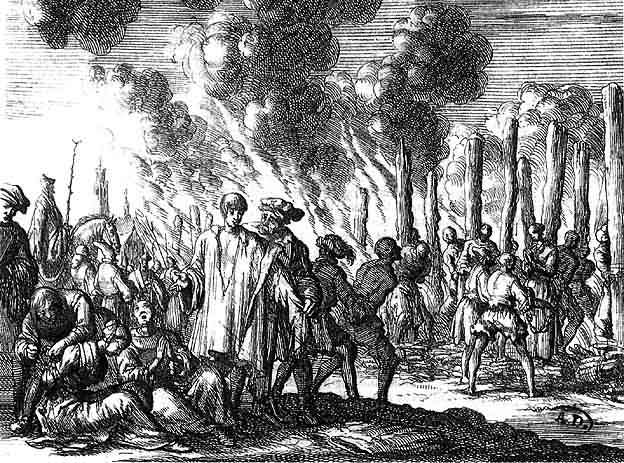
The transition to capitalism saw other changes to the status of women as well. In the 16th century, women were barred from highly skilled work and relegated to part time, low investment, home related trades. Women, unlike men, were allowed to take up more than one trade, but this was indicative of the devaluation of their work. In the 1500s, women were also forced out of guilds (Barstow, 1994). While women certainly worked, their public work was devalued, as evidenced from their ban from guilds and professions. Of course, women’s work is still devalued, as evident in the wage gap between men and women but also the amount of unpaid labor that women perform. Within capitalism, women are tasked with the social reproduction of labor. This means that women are supposed to reproduce the next generation of workers but also care for the current generation of workers by taking care of their health, cooking, cleaning, or tending to the household. Thus, control of women’s reproduction is a way to ensure the production of more laborers and their relegation to the household and denigration of their work ensures that women provide the free service of upkeeping capitalism. Witch hunting served the purpose of both controlling women’s reproduction and collectively punishing women into submission.

The Peasant Wedding-Pieter Bruegel 1567
It is no wonder then that Barstow (1994) noted that witch hunts did not simply target women, they targeted elderly, single, and poor women. Barstow (1994) cited many examples of women who lived in the margins of society as beggars or widows who were accused of witchcraft. For instance, two impoverished families living in the Pendle Forest selling trinkets and charms were accused of witchcraft in 1612. The head of the Demdike family was an 80 year old woman who was believed by locals to have practiced witchcraft for 50 years and the head of the the Chattox family was also an elderly widow. A dispute between the two families was taken to court, wherein Old Demdike’s granddaughter accused her of witchcraft along with the Chattox family, resulting in the executions of 10 people as witches. The complicated story involved a family fued, but also overzealous judges and a landlord, Robber Nutter who accused Anne Red Fearne of the Chattox family after he failed to seduce her and threatened her with eviction. In another example, Margaret Flower of Rutland England was keeper of poultry who was fired by the earl that she worked for in 1613. After the firing, the earl’s son got sick and several years later, his eldest son died. He attributed this to witchcraft and had Margaret and her two daughters arrested. Margaret died en route to prison and the two daughters were hanged. Barstow (1994) observed that on average, European victims of witch hunts were over the age of 50. In New England, women who had inherited land were more likely to be accused of witchcraft. Single women and postmenopausal women were also more likely to be accused. Women with outspoken personalities were also more likely be accused and scolding actually became a crime in Britain. The punishment was that a woman could be put in a scold’s bridle, an iron cage with spikes in the tongue. While upper class women were sometimes targeted, it was often an act of revenge. So, sexism, ageism, and class conflicts were compounded in witch hunts. This supports Federici’s (2012) argument that witch hunts supported the foundation of capitalism, because targeting outspoken women enforced submission to the new order. Targeting poor women who were beggars or outsiders to society enforced the virtue of work and the victimization of poor. Even today, the poor are often blamed for their lot in life. Targeting women without male heirs or widows also served to keep property out of the control of women.
Although Barstow’s (1994) book Witchcraze does not connect capitalism with witch hunting as clearly as Federici’s (2012) work, it supports some aspects of her hypothesis. Barstow (1994) argued that the persecution of witches coincided with changes in systems of governance. For instance, in the 16th century, governments became more powerful and centralized, with higher tax rates. At the same time, secular courts had been developing since the 15th century, often based upon inquisitional courts of the 13th century. This transition also marked a change from punitive justice, which consisted of community administered justice to less personal state administered justice consisting of fines, punishment, or execution. The changes that Barstow (1994) outlined made witch hunting possible, but also represents a shift towards more secular, rational institutions which are characteristic of capitalism. This is important to note since witch hunts are often framed as religious extremism, the scientific and secular minds of the day participated in and supported witch hunts. For instance, both Hobbes and Bodin participated in witch hunts. Most witch trials were conducted by secular courts and both Protestants and Catholics used the same arguments against witches (Federici, 2012). While the sort of evidence used against witches, the notion of witches, the trials and punishments, etc. seem wildly irrational, the phenomenon of witch hunts was rational inasmuch as it was conducted by increasingly rational, or standardized and predictable state apparatus. This same state apparatus made possible the centralization of power necessary for such elements of capitalism such as national banks, stock exchanges, overseeing the appropriation of commons, and the enforcement of property rights. Federici (2012) also noted that the Enlightenment or Scientific revolution is sometimes credited with ending witch hunting, but posits that witch hunting ended when it became more of a nuisance to those in power than an effective tool in terrorizing women into submission.
Federici’s (2012) argument is both confounded and supported by the fact that Barstow (1994) found that some areas of Europe had higher numbers of deaths than others and some areas engaged in witch hunts earlier than others. For instance, England was the first capitalist country but not the earliest or largest scale site of witch hunting. In England, primitive accumulation began in the 15th century, but it was not until the 17th century that 70-75% of the land was under the control of landlords. Marxists argue that capitalism began in England because that was where landlords were first successful at evicting peasants from common lands. The peak of the witch hunts in England were in the 1640s-60s which is precisely the same time that the English state transitioned from supporting the traditional rights of lords to supporting the development of capitalism following the English Civil War. Tenant farming became common along with state sponsored enclosures (Poynton, 2011). Most witch trials in England occurred where land was enclosed but where land remained public, there were no witch hunts. In the highlands of Scotland and Ireland, where there was slower development towards capitalism, there were no witch hunts (Federici, 2012). Nevertheless, it is confounding that England did not have the most witch hunts nor the earliest. It had some significant witch hunts such as the Pendle witches killed in 1612 and the witch hunts conducted by Matthew Hopkins between 1645-1663 which resulted in 300 executions. More research is needed to explore more precisely why England, the first capitalist country, was not the country with the first or largest scale witch hunts. It can only be said that its witch hunts did coincide with a shift towards a more state driven effort towards primitive accumulation.
The rest of Europe was slower to enclose land and developed capitalism later. According to Barstow (1994) German speaking parts of Europe had the most deaths from witch hunts, accounting for ½ to 3/4s of the deaths. Catholic areas of Germany put more witches to death, with 900 witches executed by the Prince-Bishop of Wurzburg and 600 put to death by the bishop of Bamberg alone. But, both Protestants and Catholics vigorously persecuted witches. German speaking regions were the center of witch hunts, but also experienced the strongest peasant movements and the harshest persecution of heretics and Jews. In the 16th century there were some enclosure laws, but the project to privatize lands was not complete until the 1800s. Barstow (1994) suggested that the Germanic witch hunts were a continuation of earlier persecutions and the newest form of social control. However, this answer is unsatisfying because it does not connect the hunts to capitalist development itself. German speaking areas were not centralized into a singular state, but numerous principalities, baronies, and smaller political units under the umbrella of the Holy Roman Empire. Nevertheless, the breakdown of Feudalism in Germany was particularly painful. 100,000-300,000 peasants were killed in the Great Peasant Revolt that began in 1524 and lasted about a year. It was the largest mass uprising in Europe until the French revolution. Protestant reformation also began in Germany in 1517 and resulted in various social conflicts, including the 30 Years War which began in began in 1618 and cost the lives of up to eight million people living in central Europe, broke up the Holy Roman Empire, and was ended with the Treaty of Westphalia, which set the groundwork for modern secular, pluralistic, nation states. Witch hunting was far more extensive in German speaking areas than anywhere else in Europe and certainly these 16th and 17th social upheavals played a role, even if the economy itself was not advancing towards capitalism at the same pace as England.

Image of the 30 Years War
France was the number two area in Europe or witch hunts (Barstow, 1994). Yet, property rights in France were complicated. The Feudal state in France collected taxes directly from peasants and sometimes competed with lords for their surplus. Sometimes the state intervened at the expense of lords on behalf of peasants and often made it difficult for lords to evict peasants or obtain vacant lands (Poynton, 2011). Scotland also had many witch hunts, resulting in around 4000 deaths, whereas Ireland had very few. Some areas experienced witch hunts later, such as Scandinavia where witch hunting peaked in the 1670s or Hungary, where it peaked in the 1720s (Barstow, 1994). The timeline and scale of witch hunts does not exactly follow the timeline of capitalist development in Europe, but as a general rule countries which developed capitalism sooner tended to have witch hunts sooner. It would be useful if Federici (2012) would have accounted for these differences. It can only be said that during the witch hunts many European societies were dealing with the contradictions of Feudalism. The birth of capitalism was not linear or inevitable and various societies had different elements of capitalism such as merchants, lending, industry, wage labor, markets, rents, speculation, etc. It is only in England where landlords were able to appropriate the land of peasants that capitalism got the spark that it needed to take off. The witch hunts could be framed as a part of the general growing pain that many transitioning economies were facing, though not necessarily specific to primitive accumulation.
Witches and witch hunts are a women’s history and gender issues. Victims of witch hunts were mostly women, who were subjected to male power in the form of male accusers, male juries, male religious leaders, male dominated state power, etc. On average 80% of the people accused of witchcraft were women, though in some areas the numbers were higher. For instance, in France and England, 92% of the accused were women. However, in other areas, more men than women were accused, such as Finland, Estonia, and Russia. The fact that some men were killed has been used by some historians to challenge the notion that witch hunts were gender driven acts of violence. For instance, Thompson (2003) noted that although the majority of the victims of witch hunts were women, but ¼ to ⅕ were men. There are some areas of Europe such as Iceland, Burgundy, and Normandy wherein the majority of victims were men (Thompson, 2003). It is true that in some areas, men were persecuted in greater numbers than women. Nevertheless, that in the majority of Europe, it was a gender based persecution. This is very similar to how although there are male victims of domestic violence in today’s society, the vast majority are female and violence against women plays a role in the systemic oppression of women. Still, male victims require some explanation. In Russia, 60% of the accused were men and 40% were women. In general, there was less persecution of witches and no cases of harsh torture, no children persecuted, and no spectral evidence used in courts. Witnesses were allowed in the defense of witches and there were never multiple burnings of witches. At the same time, Russia was not any less sexist than the rest of Europe. The Orthodox church was repressive of women and sex negative and Russian society had a high tolerance for violence against women (Barstow, 1994). It is also important to note that although Russia had fewer witch hunts and a different gender dynamic, it was experiencing social change in the form of the consolidation of the Russian state. Ivan IV or Ivan the Terrible came to power in 1547 and centralized the Russian empire by naming himself tsar of all Russia, by creating a secret police to terrorize other nobility, by conquering various khanates and territories, and by giving positions of power to the emerging commercial class. He also encouraged men in Russia to beat their wives and distributed propaganda that promoted domestic violence. Still, witch hunts remained a mostly Western European phenomenon. If sexism cannot be blamed for the differences in gender makeup of witches, then there must be other answers. Again, one answer may be the development of capitalism. Areas which had more men who were persecuted or fewer women, were often less developed in terms of their transition to capitalism. Finland, Estonia, Iceland, and Russia were all on the periphery of early capitalism.
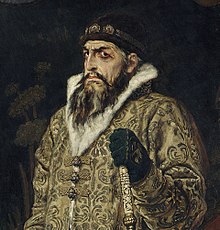
Ivan the Terrible by Viktor Vanetsov-1897
Witches Today:
Witch hunting peaked in Europe in the 1600s and declined in the 1700s. The 1734 Witchcraft Act of Britain decriminalized witchcraft. While some professional fortune tellers were persecuted, the punishment became less severe. Witch hunting itself was abolished in 1736 in England, in 1776 in Poland, and 1682 in France. Maria Theresa, the Queen of Bohemia and Hungary and Archduchess of Austria outlawed witch hunting in the late 1700s. By the 1800s, witch hunts in Europe were rare. Despite the end of witch hunting in Europe, there are many places in the world today where women continue to be persecuted as witches. For instance, women in Papua New Guinea are still murdered for accusations of witchcraft. In 2008, there were 50 people killed for sorcery, most of whom were women. In Ghana, women accused of witchcraft are widows who are punished with exile to witch villages. Those accused are often elderly women and widows with families who are looking to take over their property (Backe, 2014). In remote parts of Northeast India, over 2000 people have been killed in the last 15 years for witchcraft. Most of the victims are women who have been blamed for bad harvests or illness, but many have been accused due to land disputes (Singh, 2016). 2000 is a high number as it is greater than the number of witches killed in France, the British Isles, Eastern Europe, and Southern Europe respectively. ISIS beheaded two women and their husbands in 2015 for using magic as medicine. In Saudi Arabia witchcraft is a criminal offense and in 2006, Fazwa Falih was sentenced to beheading for using magic that caused impotence. She was sentenced on the basis of one man’s testimony but died in prison before she was executed. The entire sad story is very similar to the stories of European women who lingered and died in jail before execution and the absurdity of the accusations and evidence used against them. Witch hunts also happen in Nepal, which target low-caste women. Around the world, women, but especially poor women, continue to be persecuted as witches.
Federici (2012) argued that witch hunting continues in the so called developing world because this is where capitalism is still in transition. While capitalism is certainly a global system that impacts the furthest corners of the world, the process of proletarianization is not complete. That is, there are still places in the world where people support themselves through gathering, subsistence farming, and use of common lands. At the same time, institutions and agents of globalization put pressure on every country and region of the world to become a part of capitalism. An example how capitalism continues to privatize the commons is how Monsanto has sought to patent the genes of crops that have traditionally been grown by subsistence farmers. By patenting the crops, the farmers must buy the seeds or face fines. Because farmers must buy seeds, they must somehow earn money to grow what they once grew from saving or sharing the seeds. This forces them to become a part of the economy as consumers, but also as workers. Governments and international organizations adopt or promote policies which allow international corporations to restructure the economy towards the interests of global capitalism. For instance, in 2013 in Colombia, peasants went on strike and blocked roads in protest of new laws that outlawed exchanging seeds. In 2011, the government of Colombia actually destroyed 70 tons of “illegal” rice and raided the trucks and warehouses of rice farmers. The places in the world which continue to persecute women for witchcraft are often the very same places where people are still in the process of being forced into the capitalism.
While witch hunts have ended in more industrialized countries of the world, the idea of witches continue to be a tool of sexist oppression. For instance, in Witches, Sluts, Feminists: Conjuring the Sex Positive, by Kristen Sollee (2017) noted that Hillary Clinton was often compared to a witch by her political opponents. By calling her a witch, she was associated with something feminine, evil, ugly, and old. It was a gendered insult. Certainly, Hillary Clinton could and should be critiqued for her support of neoliberal policies that promote America’s agenda for a more violent and impoverished world. However, by calling her a witch, it sent the message to all women that it is not alright to be public, old, outspoken, and female. Sollee (2017) also made the argument that the word slut today is similar to witches in the past. They are similar because victims of sexual assault are blamed for the crime and it is a label that only applies to women. Sluts are like witches because they are persecuted for seeking control of their reproduction. While witches have become a part of popular culture, actual witches are still stigmatized in society. According to the General Social Survey in 2016, just over 70% of Americans identified as Christian. Traditionally, witchcraft has been viewed as evil by Christians. The Bible very famously states that “Thou Shall Not Suffer a Witch to Live,” in Exodus 22:18. Suffice to say that a majority of the U.S. population comes from a religious background that is uneasy if not hostile towards witches. Furthermore, the idea of a witch is used as an insult and often a negative comparison. For example, a Texas Preacher named Lance Wallnau said that the Women’s March in January 2017 was the result of witchcraft and the work of the devil. This comparison was meant to delegitimize the protest and frame expressions of female power and solidarity as evil. Pat Robertson said, “feminism is a socialist, anti-family, political movement that encourages women to leave their husbands, kill their children, practice witchcraft, destroy capitalism and become lesbians.” It is interesting that witchcraft is connected to feminism, but also associated with capitalism and abortion. This trifecta of feminist characteristics is precisely what Federici (2012) argued that the witch hunts were all about. They were about forcing women into submission, reproductively and socially, in the interest of capitalism.
Witches often capture the imagination of women today because feminist historians have done much to uncover the history of witch persecution and in doing so, redeeming witches as healers, midwives, and wise women. Therefore, to many women witches can be a symbol of resistance or counter-culture. Women may also be attracted to witches because they represent female power in the form of knowledge and defiance of social norms, but also in the more mythical and magical sense wherein witches may be depicted as actually possessing supernatural power. Witches offer an alternative role model to young women. Witches are self-reliant, they don’t need to be conventionally attractive, and they don’t need to be saved by men (Theriault, 2017). It is no wonder that witches have sometimes been associated with protest. Glinda the Good Witch from the Wizard of Oz was based upon Frank Baum’s mother in law, Matilda Joslyn Gage. Gage was a visionary woman who was a suffragist, abolitionist, and supporter of Native American rights. She also wrote about witches not as evil women, but wise women. Gage lived with Baum and served as his intellectual mentor. When he created Glinda the Good Witch, he drew from Gage’s insights that a witch did not have to be evil and thusly created a beatific and wise witch. In another example, W.I.T.C.H or the Women’s International Terrorist Conspiracy from Hell was formed in 1968 as a group of thirteen women who used costumes and the imagery of witches as a form of protest. They hexed the stock exchange on Halloween of 1968 and protested the inauguration of Nixon in 1969 and a bridal fair that same year. They developed various chapters called covens around the country (Sollee, 2017). Dianic Wicca, a goddess centered form of paganism with feminist roots emerged in the 1970s, again indicating the interest that women had in reclaiming witches not only as a political symbol but spiritual inspiration.

Interestingly, the modern idea of witches can also be oppressive to women. The word witch is a gendered term and several branches of modern day neo-paganism were developed by men (Gardnerian/Alexandrian/Crowleyan) and reflect the worldview of men drawing from medieval texts and 19th century British esoterism. For instance, the moon was envisioned as female and the sun male or masculine fire and feminine water (Theriault, 2017). Some Dianic Wiccans have been criticized for being trans-exclusionary. Beyond this, while witches appear in the media, the mainstream media is mainly controlled by men. Thus, the witches that appear in popular culture are not examples of positive, feminist role models. For instance, in Hocus Pocus, the witch characters receive their power from a man (a book), are trying to kill children, and are motivated by anti-aging. The Craft involves a plot line of social outcast teens engaging in witchcraft to punish an attempted rapist, but stopped by a middle class white women who practices a kindlier magic. Both films were directed by men (Dommu, 2016). Finally, just as feminism has been commodified by t-shirts and product advertisements, the image of witches and practice of witchcraft has also been tamed by the market. As a testimony to the money making potential of witches, Etsy has 28,000 results for the query of witchcraft. Searches for witchcraft were up 30% and witchcraft related purchases were up 60% between 2105 and 2017 (Faif, 2017). Salem, Massachusetts has cashed in on its history of witch persecution through tourism, gift shops, and specialty shops. While witches may represent subversive female power, the market often seeks to subvert the subversive if it is profitable. Thus, in an odd contradiction of late capitalism, we live in a society which disdains witches as evil and uses them to denigrate feminism while at the same time profiting from them and taming them into something more benign.

Conclusion:
Witches can inspire feminists today as a both a symbol of resistance and victim of persecution. We live in a disenchanted world. That is, capitalism destroys all that is sacred in the name of profit- family relationships, solidarity, dignity in work, relationships to the environment, leisure time, the time and autonomy to pursue passions, etc. Like witches that were denuded, poked and prodded in search of birthmarks or devil’s marks, the market economy strips us bare of our humanity and connections. Naked, cold, and alone, we live and die as workers in the home and public workplaces with little protection from the ups and downs of wages, costs of living, the economic strain of endless war, inflation, recession, and depression. At the same time, poverty is punished and punishment breeds poverty as formerly incarcerated individuals often serve as auxiliary labor as unemployed and contingent workers. Women are still cloistered in their homes and devalued in the public sphere. The great witch hunts of the 17th century have ended in the industrialized world, but continue in the impoverished, socially strained, and economically exploited regions of the world. There is no magic to fight this. There is no actual “hexing” of Wall Street. Everything magical in the world is long dead. But, there is solidarity. Witch hunts served to pit women against women and entire communities against their more vulnerable members. The worst horrors inflicted by the state and the economy are often those that we have internalized and inflict upon one another. If there is a lesson from history it is to stand against the persecution of the outsiders, the poor, the different, the elderly, women, the mentally ill, the marginal, the Other. An injury to one is an injury to all. By reclaiming our solidarity we can stand against the injustices of society, many of which are very similar to those faced by witches in the 17th century. Our criminal justice system can be just as illogical. Victims are still blamed. Public enemies are always socially constructed. The tragedy of the witch hunts is that no one organized against them. In one instance, in Basque country in Spain, a group of women were to be executed as witches but when their husbands and brothers, who had been fishing returned, they stopped the whole ordeal. It goes to show that the persecution of witches could have been stopped. All that is needed is the will and solidarity to do so.
Sources:
Backe, E. (2014, December 20). Something Wicked This Way Comes: Witches and Modern Women. Retrieved September 25, 2017, from https://thegeekanthropologist.com/2014/07/25/something-wicked-this-way-comes-witches-and-modern-women/
Barstow, A. L. (1994). Witchcraze: a new history of the European witch hunts. San Francisco, CA: Pandora.
Dashu, M. (2016). Witches and pagans: women in European folk religion, 700-1100. Richmond, CA: Veleda Press.
Dommu, R. (2016, October 20). Witches on screen: good for fashion, bad for feminism? Retrieved September 25, 2017, from https://mic.com/articles/157194/witches-on-screen-good-for-fashion-bad-for-feminism#.soR3gmPwI
Eisler, R. (1989). The chalice and the blade: our history, our future. New York, NY: HarperOne.
Faife, C. (2017, July 26). How Witchcraft Became A Brand. Retrieved October 12, 2017, from https://www.buzzfeed.com/corinfaife/how-witchcraft-became-a-brand?utm_term=.heA0yv6ANY#.cc2N940VY3
Federici, S. (2014). Caliban and the witch. New York: Autonomedia.
Knight, A. (2009, November 05). Who Were the Witches? – Patriarchal Terror and the Creation of Capitalism. Retrieved October 12, 2017, from https://endofcapitalism.com/2009/11/05/who-were-the-witches-patriarchal-terror-and-the-creation-of-capitalism/
Mays, D. A. (2004). Women in early America struggle, survival, and freedom in a new world. Santa Barbara (Calif.): ABC-CLIO.
Metcalfe, T. (2016, July 18). Black Magic: 6 Infamous Witch Trials in History. Retrieved September 25, 2017, from https://www.livescience.com/55431-infamous-witch-trials-in-history.html
Peoples, H. C., Duda, P., & Marlowe, F. W. (2016, May 06). Hunter-Gatherers and the Origins of Religion. Retrieved September 28, 2017, from https://link.springer.com/article/10.1007/s12110-016-9260-0
Poynton, D. (2011, August 08). The Rise of Capitalism. Retrieved October 12, 2017, from https://www.worldsocialism.org/spgb/socialist-standard/2010s/2011/no-1284-august-2011/rise-capitalism
Singh, V. (2016, February 24). Fighting Modern-Day Witch Hunts in India’s Remote Northeast. Retrieved October 12, 2017, from https://www.nytimes.com/2016/02/25/world/asia/india-assam-state-witch-hunts.html
Sollee, K. (2017). Witches, Sluts, Feminists: Conjuring the Sex Positive. Consortium Book Sales & Dist.
Theriault, A. (2017, February 16). The Real Reason Women Love Witches. Retrieved September 25, 2017, from https://everydayfeminism.com/2017/02/real-reason-women-love-witches/
Thompson, D. (2003, March 16). The victims of the witch hunt history would rather forget. Retrieved September 25, 2017, from http://www.telegraph.co.uk/culture/books/3591284/The-victims-of-the-witch-hunt-history-would-rather-forget.html

Posted in
activism,
education,
feminism,
gender,
history,
Politics/Ideas,
socialism and tagged
barstow,
Caliban and the Witch,
capitalism,
Capitalist history,
Chalice or the Blade,
enclosure,
federici,
feminism,
Feminist Justice League,
Feudalism,
Germany,
H. Bradford,
historical materialism,
Marxism,
peasant,
primitive accumulation,
slut,
socialism,
sollee,
witch history,
witch hunt,
witches |


 Image from:
Image from: 














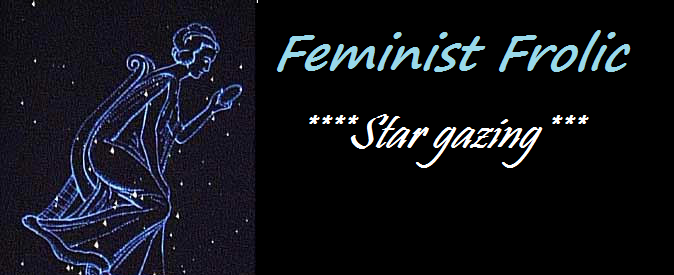


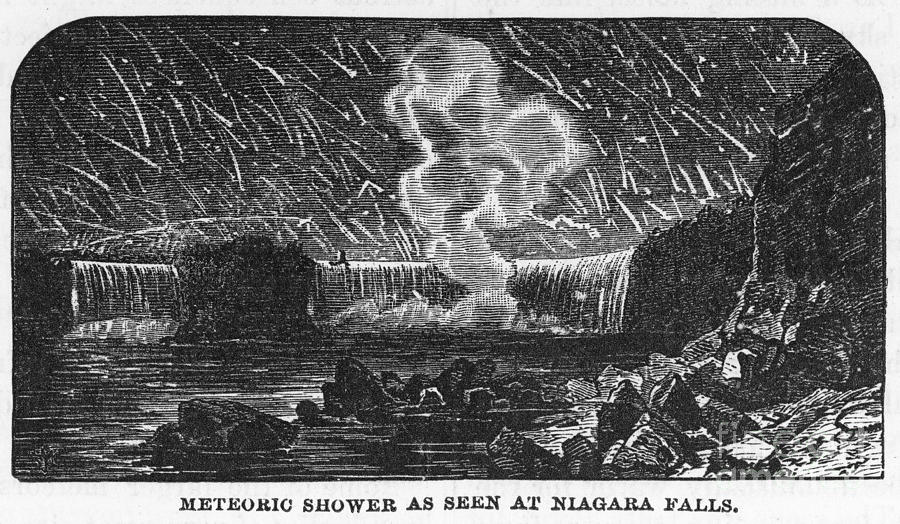




 Cassiopeia: a suspiciously white looking Ethiopian queen….
Cassiopeia: a suspiciously white looking Ethiopian queen….
